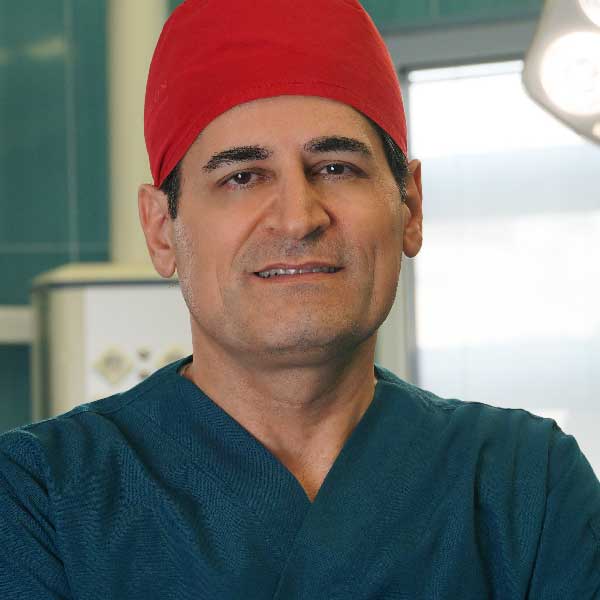
Mammoplasty – breast reduction
Breast reduction surgery and the removal of excess fat, tissue and skin from the breast is called mammoplasty and is suitable for people with large breasts.
The shape and size of the breast are different in women, and everyone considers their breast criteria according to their idea. The important point is in people whose breast size causes discomfort in other organs and parts of their body, such as damage to the neck vertebrae, back pain, and shoulder pain, and even causes breast cancer.
In the mammoplasty technique, in addition to reducing the volume of the breast, a more beautiful and proportionate shape is given to the breast. During mammoplasty or breast reduction surgery, it is also possible to reduce the halo around the breast if needed. And such breast reduction surgery can help improve your self-image and your ability to participate in social and physical activities.
If you are considering breast reduction surgery, consult with a specialist in plastic and cosmetic surgery. It’s important to understand what breast reduction surgery involves—including surgical technique, potential risks and complications, costs, and realistic expectations.
Historical perspectives
The first documented procedures for reducing excessively large breasts in women were developed by specialist reconstructive and cosmetic surgeons in the last two decades of the 19th century.
Like the nose job, breast reduction surgery had its origins in attempts to change external features to make a person more racially and socially acceptable.
Breast size was also thought to be an important determinant of the social class to which a person belonged, and attempts to change or reduce breast size to help assimilate into a particular social class, especially in countries such as Brazil, where culture and There is a mixed race in the society.
It was in the late 19th century that the concept of the “natural breast” gradually evolved.
It was only in the first decade of the 20th century that Dr. Hippolyte Morten and Dr. Eugene Hollander performed cosmetic breast reduction and described a method of removing the lateral gland with L-shaped diagonal closure.
However, in the 1930s, breast reduction was fully extended from the realm of reconstructive surgery to cosmetic surgery.
Dr. Turk was the first person to advocate free nipple grafting in cases of severe breast enlargement.
Dr. Schwartzman had described a procedure in which the nipple and areola were moved based on the medial flap.This was a major breakthrough in that the blood supply to the nipple area was based on a skin pedicle.
In a series of articles, Dr. Curtis suggested liposuction alone as a means of reducing breast volume.
Breast reduction with only short vertical scars has been a very prominent goal in breast reduction surgery, and the efforts of prominent doctors such as Dr. Ari Lassos, Dr. Madeleine Lejour, and Dr. Hall Findlay have all contributed significantly to this surgery.
The medical community and patients should be grateful to these outstanding doctors.
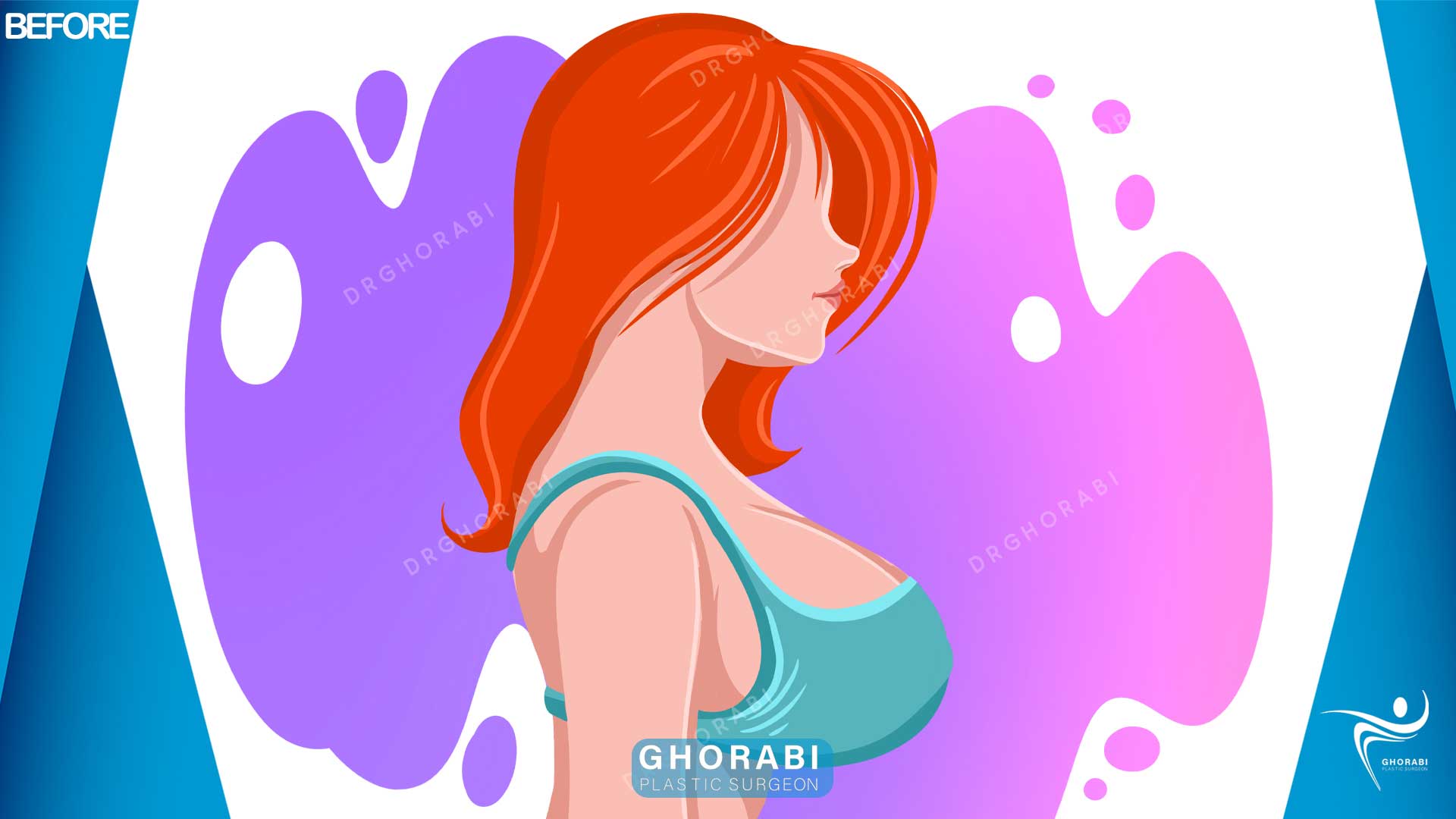
Requirements for ideal breast reduction
- Breasts should be operated in a youthful and natural way in proportion to other parts of the body.
- Two breasts should be symmetrical.
- The nipple and areola should be moved to a suitable place.
- Blood supply to the nipple and areola should not be compromised.
- Breast function should be maintained.
- The scars should not be visible through normal clothes or above the breast area.
- This practice should be applicable to all forms of deformity.
- The method should be a one-step operation.
- In order to reduce possible complications, the surgery should be
performed by a reliable and highly specialized surgeon.
Why breast surgery (mammoplasty)
The size of the breast in different individuals has different sizes according to the conditions, genetics and type of diet, and some people consider a large breast shape to be ideal. But the problems that breast size can cause for people are mostly numerous and the best option is mammoplasty and breast surgery.
Among the problems caused by breast enlargement, the following can be mentioned.
- Chronic pains in the back, shoulder, neck and spine
- Skin irritation or chronic rashes in the area under the breasts
- Restrictions on physical activities
- Problems related to clothing and bra coverage
- Low self-confidence and limitations in public relations of people
Background of breast cancer development and incidence
Anatomy related to breast surgery
The most important aspect of breast surgery anatomy is understanding the blood flow and nerve supply to the areola and nipple complex.
Understanding and knowledge of this anatomy by the surgeon will prevent unwanted and dangerous joints.
Internal mammary artery, intercostal artery and lateral thoracic artery provide blood supply to the breast
.
The internal mammary artery is responsible for about 60% of the blood supply to the breast, the middle or superomedial flap is based on the anterior perforating branches of this vessel, especially 2 and 3, which anastomose with the branches of the lateral thoracic artery.
The lateral thoracic artery provides about 30% of the blood supply to the breast, the branches anastomose inferentially with the branches of the internal and intercostal mammary arteries.
The third, fourth and fifth intercostal arteries are the least important arteries supplying the breast. The fourth and fifth intercostal arteries are responsible for the survival of the lower stem of the breast.
The sensory nerve supply to the areola complex of the nipple comes from the fourth lateral intercostal branch, which enters laterally through the fourth intercostal space and passes for several centimeters under the deep fascia.
It then travels up through the breast tissue to supply the nipple-areola. Some sensation is also provided by the 3rd and 5th lateral intercostal branches in the lateral thoracic region and the 3rd to 5th anterior branches of the intercostal nerves.
Types of mammoplasties (breasts reduction)

When planning a breast reduction, it is important to understand that the pattern of skin removal and placement of the breast stem are two completely different things.
Most skin removal patterns can be combined with most breast base patterns.
However, the lower stem is more often associated with inverted T skin excision and the upper stem or superomedial base is associated with vertical skin excision.
The types of mammoplasty techniques are based on the pattern of breast tissue selection as follows:
- Horizontal flap
- Vertical pedicle
- Lower flap
- Superior pedicle
- Central base
- Lateral stem
- Internal base
- Remove the inverted T (pattern wise)
- Vertical removal
- Peri areolar incision
- Lateral skin removal
- Pattern without vertical scars
- Liposuction only
Horizontal bipod pattern
In this pattern, blood comes from both sides, the skin stem is sufficient to keep the tip of the areola alive, but it causes the nipple to contract and the inclusion of the glandular element in the stem causes problems inside the base of the breast.
Vertical bipod
It was very popular for a long time because it provided good blood supply and was also easy to insert.
Lower stem
The lower stem was sufficient to maintain the nipple areola complex and also had other benefits – good circulation, good sensation and the possibility of breastfeeding. As a result, it replaced the vertical bipod.
Upper pedicle
The superior stem has good circulation but does not fit easily and needs to be thinned for a better fit. With this mammoplasty method, breastfeeding is no longer possible.
Central base
Central stalk breast mammoplasty is a modification of the lower stalk technique by removing the skin bridge. The blood source is the same – and venous blood drainage does not require a skin bridge.
However, one must be very careful about shearing injuries to the stem at its base on the pectoral muscles.
In this method, breast reduction preserves the sensation and potential of breastfeeding.
Lateral stem
In this surgical method, pedicle placement is easier, and it has good survival ability based on lateral thoracic artery perforators.
Internal base
Similar to the lateral stem, it has become popular after realizing that it has good sensation and blood supply and is relatively easy to place in the right place.
Inverted T Removal (Wise Pattern)
It is suitable for very large breasts and patients who have lost a lot of weight with excess skin.
It is usually associated with the lower stem but can also be combined with other stems.
It is very important to know that breast shaping depends on the skin pattern.
Vertical removal
The vertical excision pattern uses columns of remaining breast parenchyma to shape the skin as well as hold the breast up. It can be used for many things
Except for very large breasts that need some changes. For larger reductions, a small T or L may need to be added to remove excess skin in the inframammary area.
Peri areolar incision
This method is useful for small removals of breast tissue, but it requires a special and permanent suture.
Lateral skin removal
This design avoids the ugly internal scar that is often seen in inverted T-sections, but if more breast tissue is removed, the breasts will move inward and become unsightly.
Pattern without vertical scars
In this method, the stem of the breast is lower and wider.
The chest tends to be flat and lacks upper pole fullness. Scars also tend to pull the breast tissue down.
Liposuction only
This method is suitable for drooping breasts accumulated from fat. It relies on the elasticity and contraction of the skin. It is more likely to preserve nipple sensation and breastfeeding potential, but it is not suitable for the treatment of gigantomastia in adolescents.
Where are the cuts?
The most common method of breast reduction involves three incisions:
- An incision is made around the areola.
- The other goes vertically from the lower edge of the areola to the crease under the breast.
- The third cut follows the natural curve of the breast crease.
After removing excess breast tissue, fat and skin, the nipple and areola are moved to a higher position. The areola, which is usually elongated in large breasts, also decreases in size.
The skin that used to be above the nipple is pulled down and together to change the shape of the breast.
A common breast reduction procedure removes excess breast tissue, fat, and skin through the incisions shown.
The nipple and areola remain attached to the underlying tissue but are moved to a higher position. Areola size often decreases at the same time.
The nipples and areolas remain attached to the underlying tissue, which preserves blood supply and usually sensation. The ability to breastfeed may also be preserved with this method, although it cannot be guaranteed.
The skin that used to be above the nipple is pulled down and together to change the shape of the breast.
Is breast reduction suitable for me?
Giant hypertrophy is a condition in which young girls at puberty have large breasts that are disproportionate to the rest of their body. These patients suffer from major mental problems and are the center of cruel jokes, their breasts do not fit in normal clothes, and they also have problems participating in sports activities. They also experience chronic shoulder, back, and chest pain.
After having a baby, women are usually more interested in correcting breast sagging after breastfeeding, and they also want to fill the empty pole above the breast and get rid of symptoms caused by breast heaviness.
If the breasts are found to be predominantly fat, some of these can be treated with liposuction alone.
Postmenopausal women of these patients usually need breast reduction to relieve the symptoms related to large and heavy breasts. These usually have a large reduction in cup size.
If you want to change your appearance, or if you have large breasts that cause or contribute to:
You are physically healthy.
You have realistic expectations.
You are bothered by the feeling that your breasts are too big.
You have breasts that limit your physical activity.
You experience back pain, shoulder pain and neck pain due to the weight of your breasts.
You have an indentation on the shoulder from the bra strap.
You have chronic skin infections under the breast crease.
Whether you want to eliminate discomfort or reshape your breasts for a more flattering appearance, breast reduction can help.
Procedure and stages of mammoplasty operation
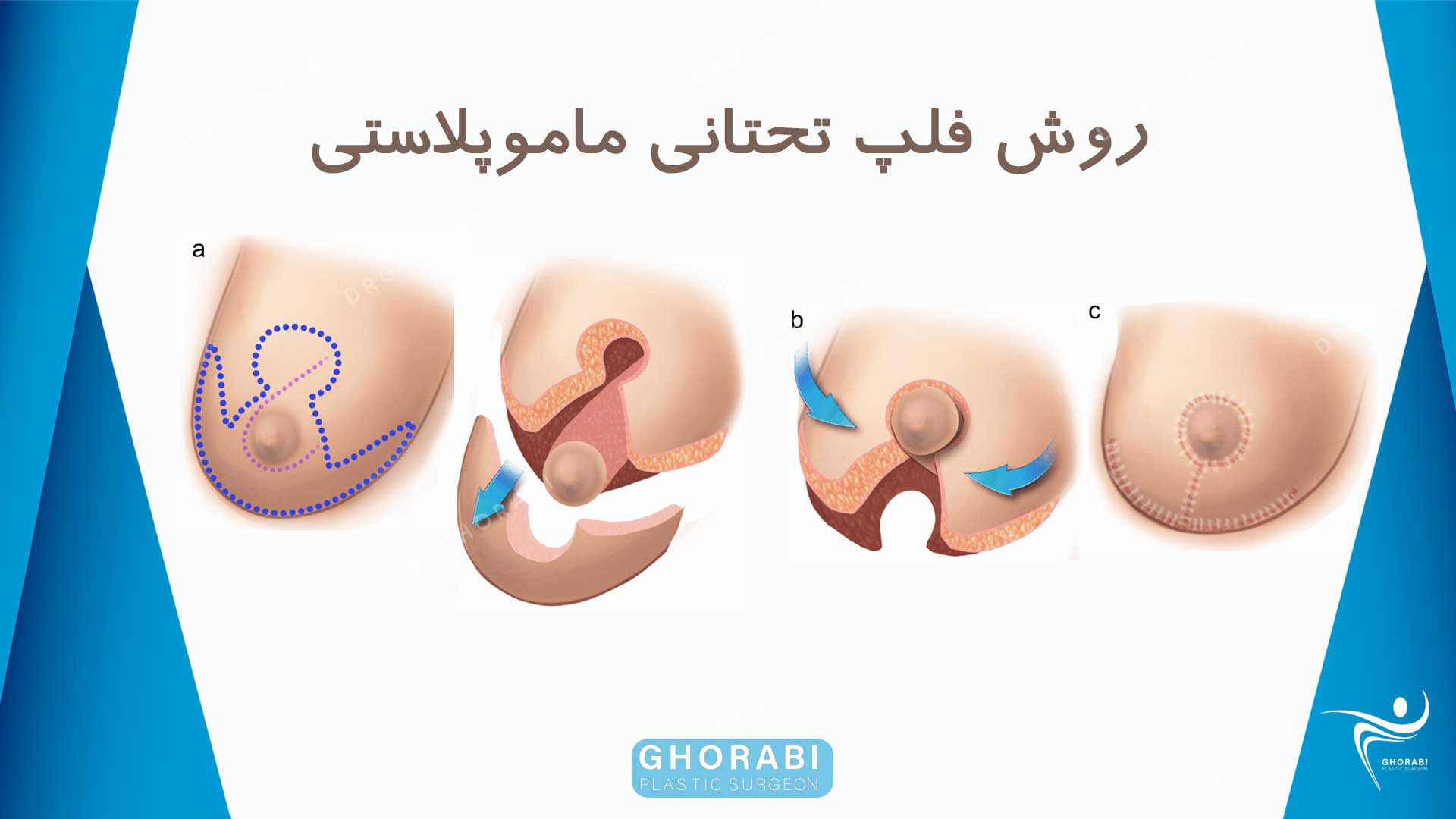
There are several techniques for breast reduction surgery. Through years of training and experience, we have learned that each patient needs his own technique according to the anatomy of the body, the consistency of the skin and subcutaneous tissue, the consistency of the breast and the volume of the breast.
In some patients, the surgical incision is made in the area around the chest, and in others, this incision continues vertically to below the breast. Then the extra breast tissues are removed and the breast is placed in a higher part.
Breast reduction surgery is something that should be done with the opinion and approval of the applicant. Due to the fact that this operation is included in the category of cosmetic operations, it is the person who must determine what shape the breast will take after the operation.
After getting the patient’s opinion and consultation from a mammoplasty surgeon, mammoplasty surgery is performed on the breast through one of the following three methods.
Mammoplasty through an incision around the nipple (breast areola)
Vertical scar mammoplasty
Mammoplasty by anchor pattern method or T shape
Patients with very large breasts may require more complex surgery. The surgeon may remove the areola (darker area around the nipple) and the nipple before the breast reduction and reattach them after the breast reduction.
After cutting the desired area and changing the desired size and shaping the breast, it is connected through a plastic suture. It should be mentioned that this procedure is done on foot and under general anesthesia.
The duration of breast reduction surgery varies according to the technique used, but usually this surgery takes about three to five hours.
Steps before mammoplasty
The first step to perform such a procedure is to choose an experienced plastic and mammoplasty surgeon.
When choosing a breast reduction plastic surgeon, remember that the surgeon’s experience and your comfort with him or her are just as important as the final cost of the breast reduction.
Breast reduction can be done at any age, but plastic surgeons usually recommend waiting until the breasts stop growing.
Childbirth and breastfeeding can have significant and unpredictable effects on the size and shape of your breasts; however, many women decide to have a breast reduction before having children, feeling that they can later on. Fix the next changes.
If you plan to breastfeed in the future, you must tell me before the surgery. This will help me choose the right technique for you.
During your breast reduction consultation, be prepared to be aware of the following:
You will be asked about your desired breast size as well as anything else about your breasts that you would like to improve. This helps me understand your expectations and determine whether they can realistically be met.
Why do you want surgery, what are your expectations and desired result?
What were your medical conditions, drug allergies and previous medical treatments?
What is the use of current medications, vitamins, herbal supplements, alcohol, tobacco and drugs?
What is the family history of breast cancer and the results of any previous mammography or sampling?
Dr. Gholamhossein Ghorabi, specialist in cosmetic plastic surgery, also:
It assesses your general health status and any previous health conditions or risk factors.
He will examine your breasts and may measure their size and shape, the quality of the skin, the location of the nipples and areolas.
He takes pictures for further examination and his medical record.
Talk about the possible results of breast reduction surgery and any possible risks or complications.
Discuss with you the use of anesthesia during the breast reduction procedure.
After the plastic surgeon examines your general condition, you may be asked to:
Get a blood test or medical evaluation.
If you are taking certain medications, adjust your current medications.
Have a baseline ultrasound or mammogram before surgery and another mammogram a year after surgery to help detect any future changes in your breast tissue.
Quit smoking for good at least four weeks before breast reduction surgery.
Avoid aspirin, anti-inflammatory drugs, and herbal supplements because they can increase bleeding.
You should also consider the following before surgery.
Avoid drinking alcohol two weeks before the operation. Do not use anticoagulants.
Your plastic surgeon will also discuss where your procedure will be performed. Breast reduction surgery may be performed in an accredited outpatient surgery center or a hospital.
The decision to have breast reduction surgery is a very personal one.
You have to decide whether the benefits of breast surgery are close to your goals.
Are the risks of breast reduction surgery and possible complications acceptable or not?
The plastic surgeon or the plastic surgery staff will inform you in detail about the risks associated with the surgery.
You will be asked to read and sign the consent forms carefully to ensure that you fully understand the surgery and any possible risks or complications.
Remember to avoid eating and drinking at least 8 hours before surgery and do not eat heavy food on the day of surgery.
Take it with you if you are admitted to the hospital on the day of surgery and when you are discharged.
Be aware that:
A significant reduction in breast volume can change the shape and appearance of your breasts.
There will be scarring and possibly loss or change in nipple sensation.
Your breasts can change in size and shape after surgery, for example, if you gain or lose weight, they may increase or decrease in size.
Breasts tend to sag with age.
Your breasts will get bigger during pregnancy and you may not be able to breastfeed after surgery so you may need to wait until you are sure you do not want to have any more children.
Breast reduction surgery alternatives:
The following steps may help:
- If you are overweight, losing weight can sometimes help reduce fatty tissue in your breasts.
- For many women who have problems with large breasts, wearing a professional bra with the right size can reduce the discomfort.
- Physiotherapy exercises can sometimes help with pain caused by breast enlargement.
Psychological support and therapy – this can help if your large breasts are causing you emotional or psychological problems.
Mammoplasty therapy
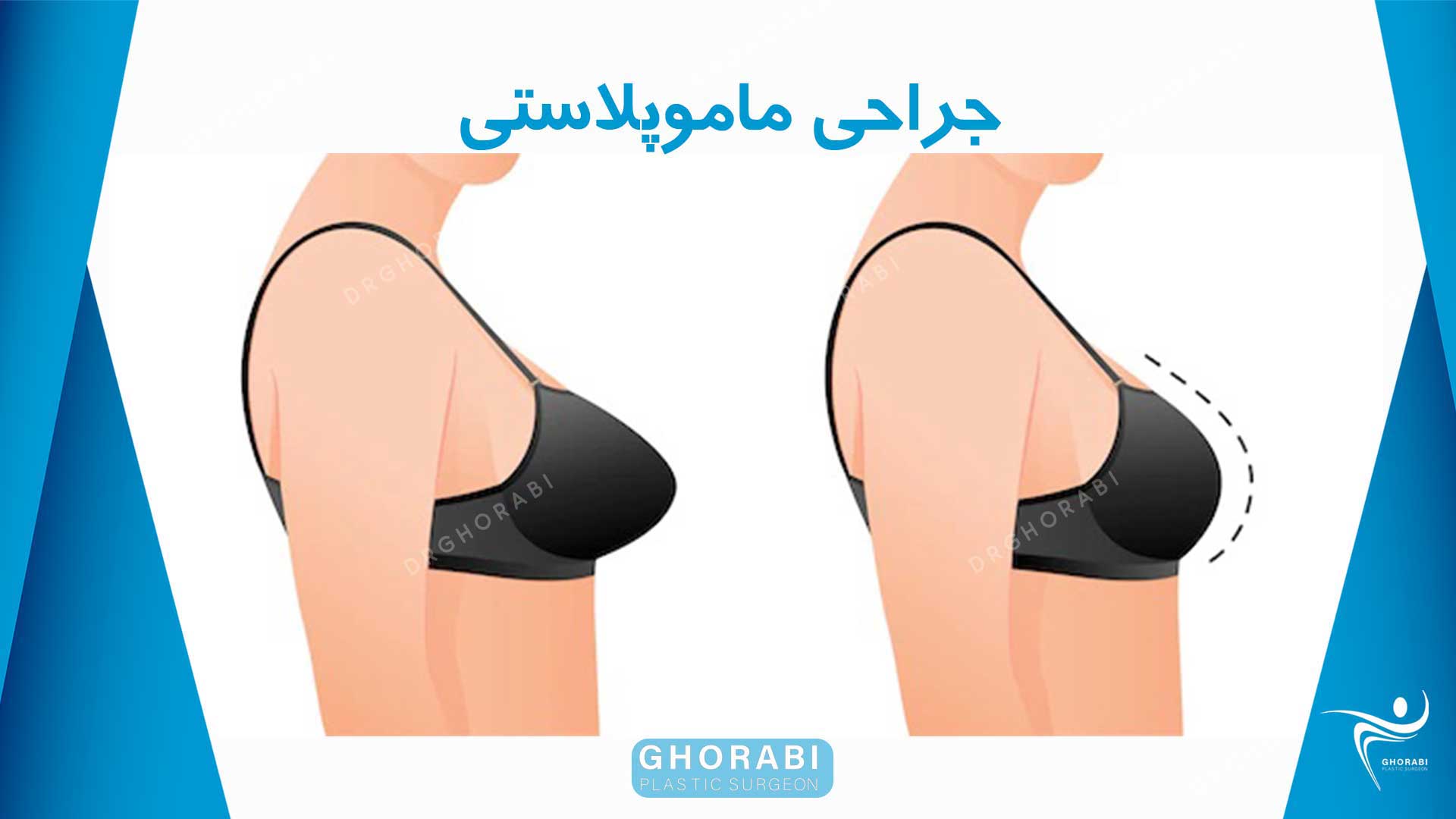
Insurance coverage for breast reduction surgery varies depending on eligibility criteria set by medical boards.
Some insurances do not cover breast reduction surgery at all, and others cover it selectively if you meet certain criteria.
In general, if you have problems caused by having very large breasts, you may be considered by insurance companies to pay all or part of the cost of your breast reduction surgery, such as:
- Back pain caused by gigantomastia
- Shoulder or neck pain
- Skin irritation
- Rashes and skin infections under the breasts
- Grooves on the shoulders caused by the pressure of the bra due to the large size of the breast
- Psychological distress, such as low self-esteem or depression
- Inability to exercise or participate in sports
Failure to participate in social events is the reason for the extremely large breasts
Advantages and disadvantages of mammoplasty
The advantages of breast reduction surgery include the following:
- Relief from physical symptoms caused by excess weight of large breasts
- Relief from back, neck or shoulder pain caused by the weight of your chest
- Breast reduction surgery reduces discomfort and improves appearance.
- Breast reduction surgery helps improve self-image and the ability to participate in physical activities.
- Among the disadvantages of breast reduction surgery are the following:
- Breastfeeding problems
- Complications related to surgery
- Poor wound healing
- Changes in nipple or breast sensation, which may be temporary or permanent
- Excessive tightness of the chest
- The possibility of not being able to breastfeed
- Accumulation of fluid that needs to be drained
- Skin color change, permanent pigment changes, swelling and bruising
- Unsightly scars or scars
The care period after mammoplasty
The general things that you should observe after mammoplasty surgery are as follows:
- You will be able to get out of bed and walk on the same day of surgery.
- After two weeks you do light activities.
- You can return to normal exercise in six weeks.
- Most patients take at least two weeks off after the operation, depending on their job.
- Your breasts will be sore and swollen for several weeks after the operation.
- Do not lift heavy objects for several weeks.
- Avoid sex for at least two weeks.
- After the surgery and discharge from the hospital, pay attention to the doctor’s advice and the prescribed medicines and take them carefully.
- Wear loose and comfortable t-shirts and blouses for at least the first two weeks after surgery.
- It is better to take a bath after 2 days after the mammoplasty operation, remove the dressing from the surgical site and wash your wound with a neutral shampoo while bathing.
- Preferably, bandage the surgical incision site for a week and change this dressing every 48 hours.
- Use medical bras to hold the breast, and it is better if the pressure on the breast is proportional.
- For 1 month, avoid doing heavy activities, sports that put pressure on the upper body.
- Use a high-protein diet and drink more fluids during the first few days after the operation.
- The pains caused by surgery should be relieved with the drugs and painkillers prescribed by the doctor, and if you have severe pain, contact your doctor.
Expectations after mammoplasty surgery
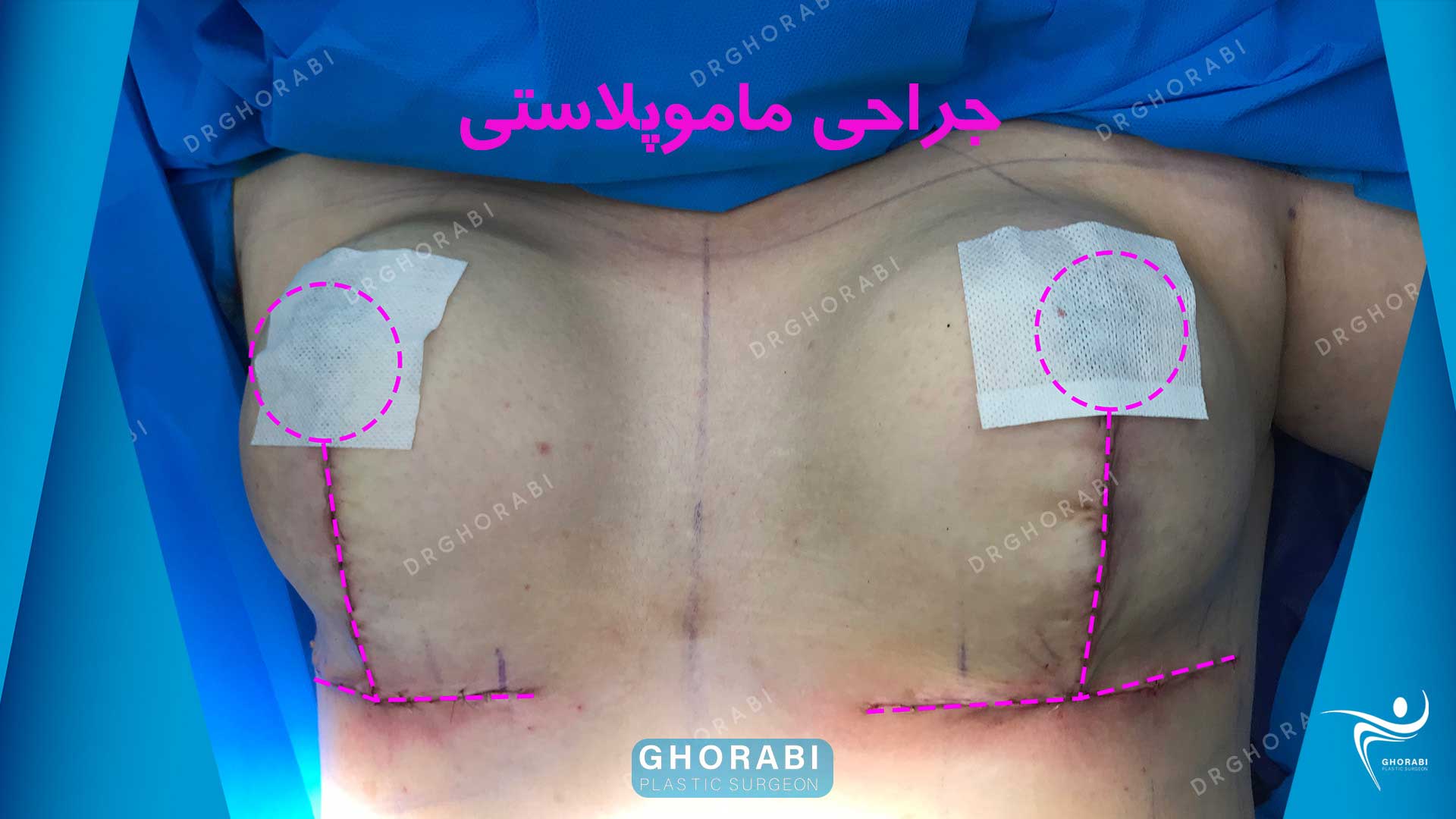
You may go home the same day or stay overnight in the hospital.
A gauze dressing is placed over your breasts and your bra is placed over it.
Wear a surgical bra or a soft support bra for as long as your surgeon tells you to and continue for several weeks.
Drainage tubes or drains are not usually connected to your breasts.
Your pain should subside within a few weeks. Ask your surgeon if you can use acetaminophen or Advil for pain relief instead of narcotics. If you use narcotic medicine, be sure to take it with food and plenty of water.
Don’t put ice or heat on your breasts unless your doctor tells you it’s okay.
Outside of the instructions given, ask your surgeon when it is appropriate for you to shower or bathe.
Within a few weeks, the swelling and bruising around your incisions should go away.
You may lose feeling in the skin of your chest and nipples after surgery, this feeling is temporary and will return over time.
Follow any other self-care instructions you are given.
Schedule a follow-up visit with your surgeon, at which time you will be checked to see how you are healing.
Your stitches are absorbable and will not need to be pulled.
Side effects of mammoplasty
- Allergy to adhesive tape, suture materials, blood products, topical medications or injectables
- Temporary bruising at the site of incision and surgery
- Pain that may be prolonged.
- Poor wound healing
- Changes in nipple or breast sensation, which may be temporary or permanent
- Excessive tightness of the chest
- The possibility of not being able to breastfeed
- Accumulation of fluid that needs to be drained
- Skin color change, permanent pigment changes, swelling and bruising
- Unsightly scars or scars
Possible risks and dangers of mammoplasty
Possible risks of breast reduction surgery or mammoplasty are:
- Dangers of anesthesia
- Bleeding and hematoma
- Irregularity in the contour and shape of the breast
- blood clotting
- Deep vein thrombosis, cardiac and pulmonary complications
- Damage to deeper structures—such as nerves, blood vessels, muscles, and lungs—can occur and may be temporary or permanent.
- Asymmetry in the size and size of the breasts, which may lead to re-surgery.
- Fat tissue deep in the skin may die (fat necrosis).
- Infection
- Possibility of revision surgery
- Possible loss of skin or breast tissue where the incisions meet
- Potential, partial or total loss of the nipple and areola
Results of mammoplasty

Medicine and surgery are not an exact science. Although good results are expected, there are no guarantees. In some situations, it may not be possible to achieve the desired results with one breast reduction procedure and another surgery may be necessary.
This procedure makes the breast shape smaller and more beautiful, and finally it can create high self-confidence for the applicant.
Also, people who exercise professionally do this more easily.
Mammoplasty has a great effect in preventing neck, spine, back pain and even breast cancer.
You should know that:
Breast reduction surgery can interfere with some diagnostic procedures.
Your ability to breastfeed following reduction mammaplasty may be limited, talk to your doctor if you plan to breastfeed.
Breast reduction surgery can be performed at any age, but is best done when the breasts are fully developed.
Changes in the breasts during pregnancy can alter the results of previous breast reduction surgery.
Severe weight loss or weight gain in the future can affect the results of breast surgery
What is the cost of breast reduction?
Breast reduction costs may include:
Medical tests
Hospital or surgery center costs
Anesthesia costs
Bra after surgery
Surgeon’s fee
Drug prescriptions
This average cost is only part of the total price – anesthesia, operating room facilities, or other related costs may cost more or less depending on the services provided.
Please consult with Dr. Gholamhossein Ghorabi specialty plastic surgeon’s office to determine your final cost.
The surgeon’s fee for breast reduction will be based on his experience, the type of procedure used and the geographic location of the office.
When choosing a board-certified plastic surgeon for breast reduction, remember that the surgeon’s experience and your comfort with them are just as important as the final cost of breast reduction.
Ten golden tips about mammoplasty
Am I a good candidate for breast reduction?
Girls or women with heavy breasts and symptoms of pain in the shoulder, neck area or difficulty wearing selected clothes can consider breast reduction.
What is the best age for breast reduction?
Breast reduction does not have a specific age. It mainly depends on the symptoms that a person may experience such as neck pain, back pain or lack of confidence due to large breasts.
Mammoplasty should be performed when the weight is stable, the breast size remains stable for at least 6 months and you are in good health.
Is breast reduction dangerous?
Breast reduction surgery has a high satisfaction rate. If performed by a licensed plastic surgeon trained in breast surgery, it is a low-risk procedure with excellent results.
Is a breast lift performed with breast reduction?
Yes, breast lift is part of this procedure
What is the recovery time after breast reduction?
It is better to take 7 days off from work. Depending on the type of job, you may be able to resume your work by then. Remember that vigorous activities should not be resumed before two weeks.
What tests should be done before breast reduction?
Before any cosmetic surgery, preliminary tests such as complete blood profile, coagulation profile, chest X-ray, ECG are required. Also, in some cases, hormonal evaluation may be needed to properly assess the cause of breast enlargement.
According to the discretion of the doctor and your age, the request for ultrasound and mammography of the breasts is inevitable
Can breast reduction be done without surgery?
In some cases, caused by hormonal issues, breast size may be reduced with hormone therapy, but in most cases, surgery is the gold standard.
Of course, there are other methods and methods to reduce the size of the breast except mammoplasty, which depends on the shape of the breast and the condition of the breast. Alternative methods are weight loss and bodybuilding exercises
What are the causes of breast enlargement?
Breast enlargement can be due to hereditary factors, pregnancy, weight gain or hormonal changes.
When can the final results be seen after breast reduction?
The results of breast reduction are noticeable immediately after breast reduction. Final results can take up to 6 months to reduce swelling.
Can breast reduction be combined with another method?
Yes, it is important to discuss all aspects in detail with your plastic surgeons, as the total length of surgery is an important factor.
Summary
Breast reduction is a common cosmetic surgery.
Its purpose is not only to reduce the size of the breast according to one’s structure, but also to overcome the discomfort caused by large, misshapen and sagging breasts.
The surgical method has evolved from the mere reduction of the breast mass to increase the aesthetic appeal with minimal scar effects.
The choice of technique should be individual. Bilateral breast reduction is often performed.
Hematoma, seroma, fat necrosis, skin loss, nipple loss, and unpleasant and painful scars can be side effects of any operation on the breast.
These may result from errors in judgment, incorrect surgical planning, and imprecise execution of the plan. Although there are many studies available on breast reduction, few of them focus on its side effects.
Most complications can be overcome by choosing the right method for each patient and correct management of breast tissue.
Questions and answers with Dr. Gholamhossein Ghorabi
How is breast reduction surgery performed?
This procedure involves first lifting the nipple to a new position, attaching it and keeping it alive on a tissue base. Then the excess skin and breast tissue are cut. The remaining skin and tissue are reshaped into a smaller and more beautiful breast, and the nipple is placed in place and sewn by special stitches.
If your breasts are too large or droopy, your nipple may need to be completely removed and then stitched back into place.
What is mammoplasty alternative treatment?
If your problem is caused by having large breasts, you should use a suitable bra before proceeding with the surgery. Other alternatives include lifestyle changes such as weight loss.
What are the main risks and complications of breast reduction surgery?
Like all procedures, breast reduction comes with risks. Although the risks are rare, it is important to weigh them against the potential benefits of mammoplasty surgery. Discuss each with your plastic surgeon to make sure you understand the potential complications and consequences.
What are the changes in the common method of breast reduction?
There are many variations in the design of breast reduction incisions. The size and shape of your breasts, as well as the desired amount of reduction, are factors that will help determine the best technique for you.
In some cases, it may be possible to avoid a vertical incision that extends from the lower edge of the areola to the breast crease or a horizontal incision below the breast.
Rarely, if your breasts are very large, the nipples and areolas may need to be completely removed before they can be moved to a higher level. In such a case, you have to decide to sacrifice the sensation and the possibility of breastfeeding in order to reach the desired breast size.
When can I resume my normal activities after mammoplasty surgery?
After breast reduction surgery, depending on your occupation, you can often return to work within one to two weeks. In most cases, you can resume most of your normal activities, including some light exercise, after three weeks. You may experience some mild and periodic discomfort during this time, but such feelings are normal. Severe pain should be reported to me immediately.
Any sexual activity should be avoided for at least a week. After that, you should be careful to be very gentle with your breasts for at least the next six weeks.
How long will the results of breast reduction surgery last?
Your breast size should stay relatively constant unless you gain or lose a significant amount of weight or become pregnant. However, gravity and the effects of aging eventually change the size and shape of every woman’s breasts. If you are dissatisfied with the appearance of your breasts after many years, you can have a breast lift to restore the youthful contour of your breasts.
Is it possible to breastfeed after breast reduction surgery?
A decade or two ago, many women were unable to breastfeed after having a breast reduction. But today, plastic and cosmetic surgeons use techniques that preserve the function of structures related to breastfeeding, so you are more likely to be able to breastfeed.
Does breast reduction surgery improve health-related quality of life?
Yes, breast reduction surgery will significantly improve your quality of life.

